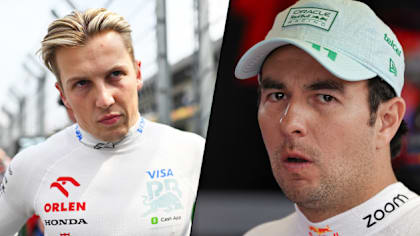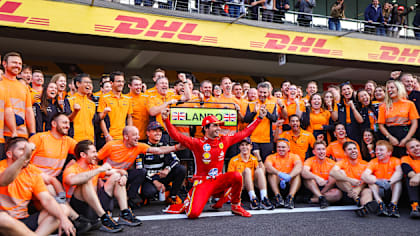
Feature
DESTINATION GUIDE: What fans can eat, see and do when they visit the Mexico City Grand Prix
Share

The vibrant and populous metropolis that is Mexico City first hosted a championship Grand Prix in 1963, Jim Clark winning at this high-altitude circuit, and so began a love affair which married the sport with some of the most fervent fans in the world – the lively fiesta atmosphere continues to this day thanks in no small part to having one of their own in the shape of Sergio ‘Checo’ Perez on the grid.
The Autodromo Hermanos Rodriguez is located just to the east of the city and is well served by a nearby fast and efficient Metro, meaning you can easily be transported back into the heart of the city, with all it has to offer, in the time it takes to eat a taco.
Where and what to eat
Mexico City has a rich culinary heritage which spans cheap and delicious street food sold from carts each day on busy thoroughfares, to incredible high-end cuisine served by passionate and inventive chefs who are redefining what Mexican food is.
The taco is king in Mexico and whether you prefer a tortilla made of traditional corn or Spanish-introduced wheat flour, then filled with rich and fatty carnitas or tasty grilled al pastor, it’s a universal truth that the most delicious taco will be the one served hot at the side of a road for a few pesos.
Celebrated Mexican chef Enrique Olvera – who was born and raised in Mexico City – first opened his world-renowned restaurant Pujol in 2000 after graduating from the Culinary Institute of America.
What began as a menu of dishes typical of his classical training but using Mexican ingredients, soon evolved into a celebration of Mexican cuisine reimagined and Olvera became an ambassador for Mexican gastronomy.
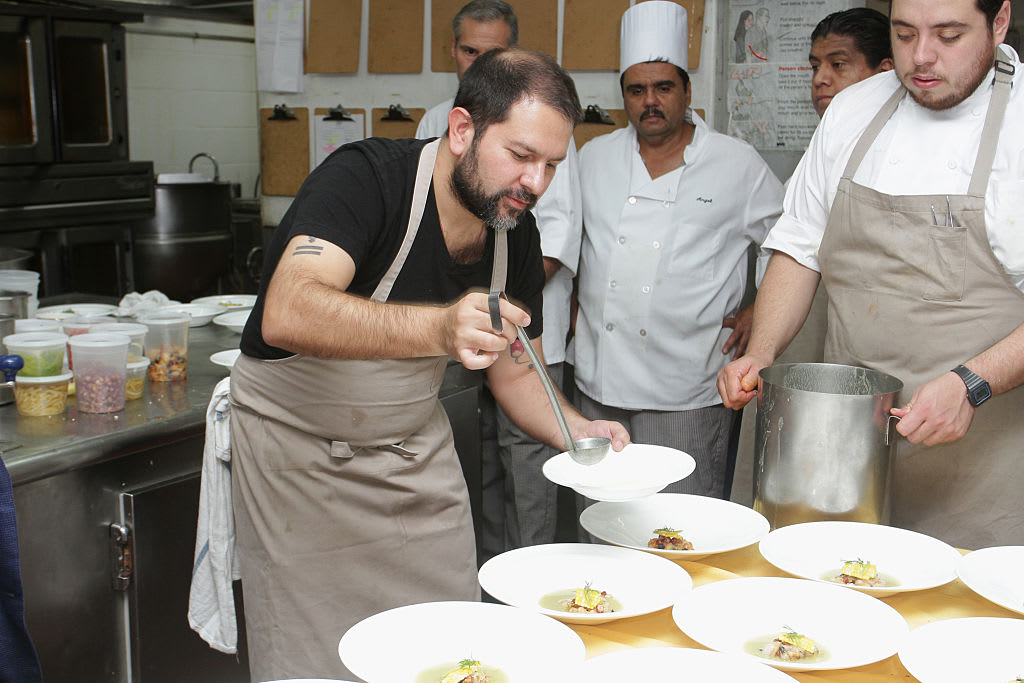
Celebrated chef Enrique Olvera was born and raised in Mexico City
By using produce from small-scale farms from various regions in Mexico, Olvera is helping to preserve indigenous traditions and ingredients, as well as securing the futures of the farmers growing the produce.
The tasting menu at Pujol is continually evolving but always shines a light on incredible Mexican ingredients and reinterprets them in an elegant way, ensuring his establishment’s continued presence on the World’s 50 Best Restaurants list.
READ MORE: When is the Formula 1 2024 Mexico City Grand Prix and how can I watch it?
The ‘Mole Madre, Mole Neuvo’ is a standout dish and combines a circle of 1,500 day old mole with an inner circle of freshly made mole. The ultimate metaphor for Olvera’s food ethos.
If the magical open-air setting dripping with greenery and generously strung with festoon lights doesn’t make you fall in love with Huset, then the delicious menu which changes every day depending on what’s good at the market and in season, served by warm and knowledgeable staff certainly will.
Mexican Grand Prix: 5 great battles from the F1 archive
The brainchild of Venezuelan-born chef Maycoll Calderon, who cut his culinary teeth at various establishments in the city before opening on his own, this unique restaurant in the lively Roma area of Mexico City is the perfect place to gather with friends and enjoy dishes cooked almost exclusively over fire using carefully sourced ingredients, combined with influences of the many countries Calderon lived in before settling in Mexico City.
The cornbread soaked in honey gathered from wild hives by traditional methods in Yucatan, served with whipped goats cheese and dusted with chilli powder, is truly outstanding and the perfect combination of high-quality Mexican produce presented in a modern way.
READ MORE: Everything you need to know about F1 – Drivers, teams, cars, circuits and more
Overlooking the huge central expanse that is the Zocalo in the heart of Mexico City is Restaurante Balcon del Zocalo, an elegant terrace restaurant serving a modern menu of Mexican classics in a relaxed setting, while you take in the goings on of street traders and performers in the main square below.
Located in the hip Roma area of the city, Con Vista al Mar is a lively neighbourhood joint specialising in fresh seafood tacos and aguachile (shrimps or scallops marinated in lime juice and chiltepin peppers, usually garnished with slices of cucumber), all overseen by charismatic chef Irak Roaro who prides himself on serving ‘authentic beach flavour from the grill’.
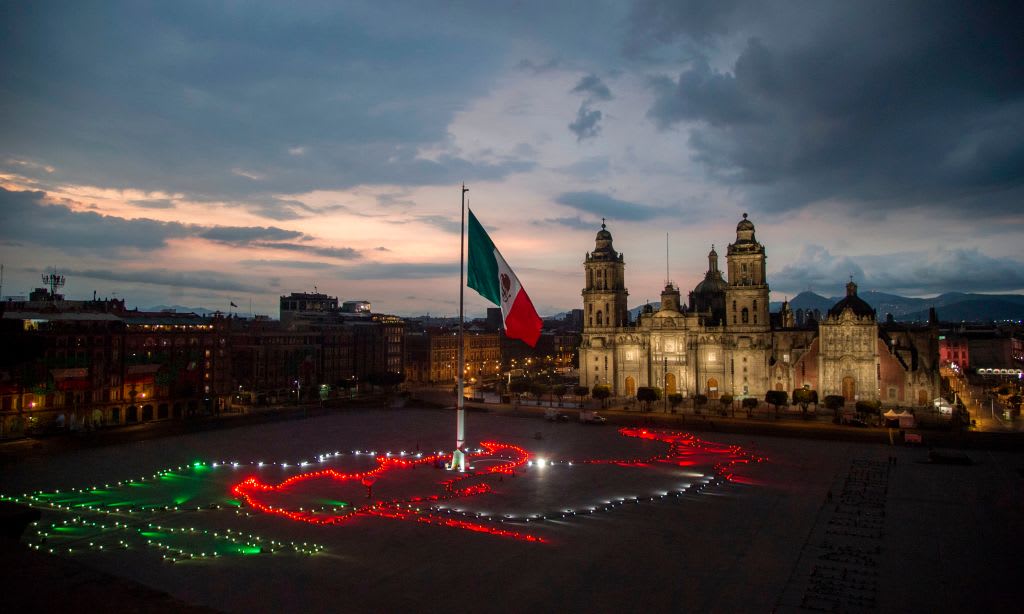
The Zocalo square lies in the heart of Mexico City
Karisma Cantina is a colourful and welcoming no-nonsense traditional Mexican restaurant situated in the Polanco area of the city. Serving delicious, simple Mexican dishes to be washed down with a Mexican beer or large margarita with friends.
Where to stay
As you might imagine in a place the size of Mexico City, there are many hotels to choose from. For big name chain hotels, head for the downtown area of the city close to the main square (Zocalo) or in the Reforma district. Alternatively, book a stay in one of the many small boutique hotels in the vibrant and cosmopolitan Roma district where you will be surrounded by funky bars and restaurants amongst leafy streets.
READ MORE: The beginner’s guide to the F1 weekend
Where to watch the race
There really is only one place to consider watching the action at the Autodromo Hermanos Rodriguez first, and that is in the Foro Sol.
Not only will you get to peer into the cockpits of the cars as they pass through the stadium, but the electrifying atmosphere during the podium ceremony has to be experienced to be believed.
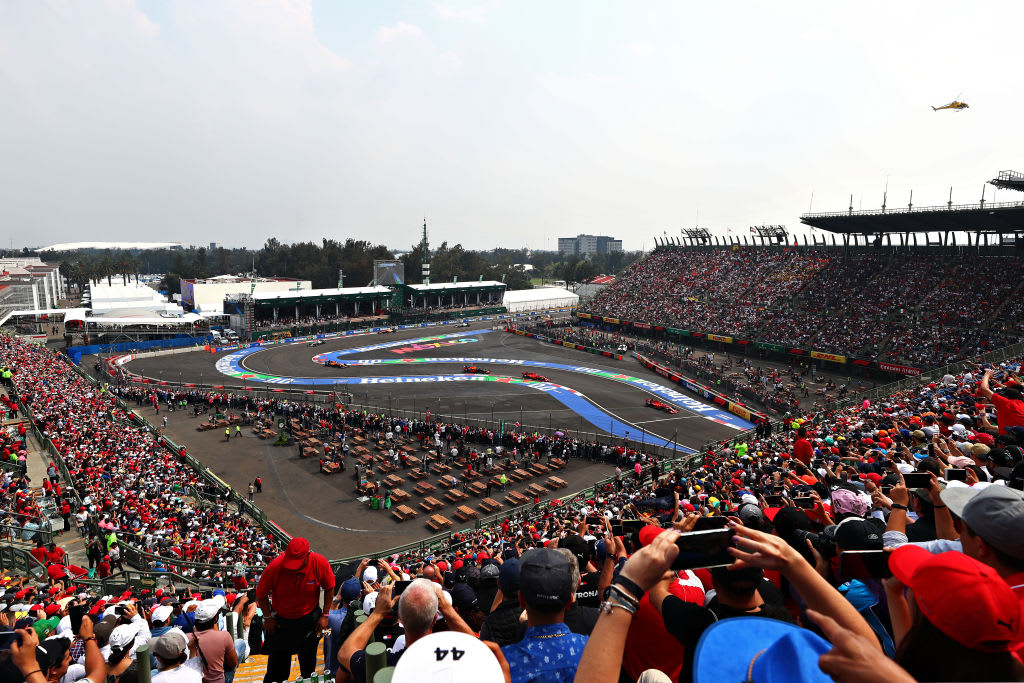
The Foro Sol is undoubtedly the best place to watch the Grand Prix from
Non-F1 highlights
Despite being one of the most populated metropolises in the world, Mexico City has a surprisingly large number of parks and green spaces to explore.
Spanning an area of just over 1,700 acres, Chapultepec is one of the largest parks in Mexico and the second largest in Latin America. For Mexico City residents the park is a valued cultural and historic area, full of ancient ruins dating back to Teotihuacan and Aztec times, as well as an essential green ‘lung’, home to a large number of Montezuma Cypress trees – many of which are hundreds of years old – and rare species of birds, reptiles and amphibians such as the endangered Axolotl.
READ MORE: The beginner’s guide to the F1 calendar
The park is divided into four sections with the first section being the oldest and most popular, attracting over 15 million visitors each year thanks to the National Museum of Anthropology and Chapultepec Castle, which was built by the Spanish as a summerhouse for the Viceroy in 1785 on top of Chapultepec Hill, once a sacred place for the Aztecs and now the National Museum of History.
To fully grasp the rich history and culture of Mexico and Mexico City, make sure you pay a visit to the museum located on Reforma Avenue in the heart of Chapultepec Park. Arguably one of the most beautiful museums in the world, it houses thousands of significant archaeological and anthropological artefacts from the country’s pre-Hispanic heritage, including the Stone of the Sun (Aztec Calendar Stone), and treasures recovered from the Mayan civilisation.
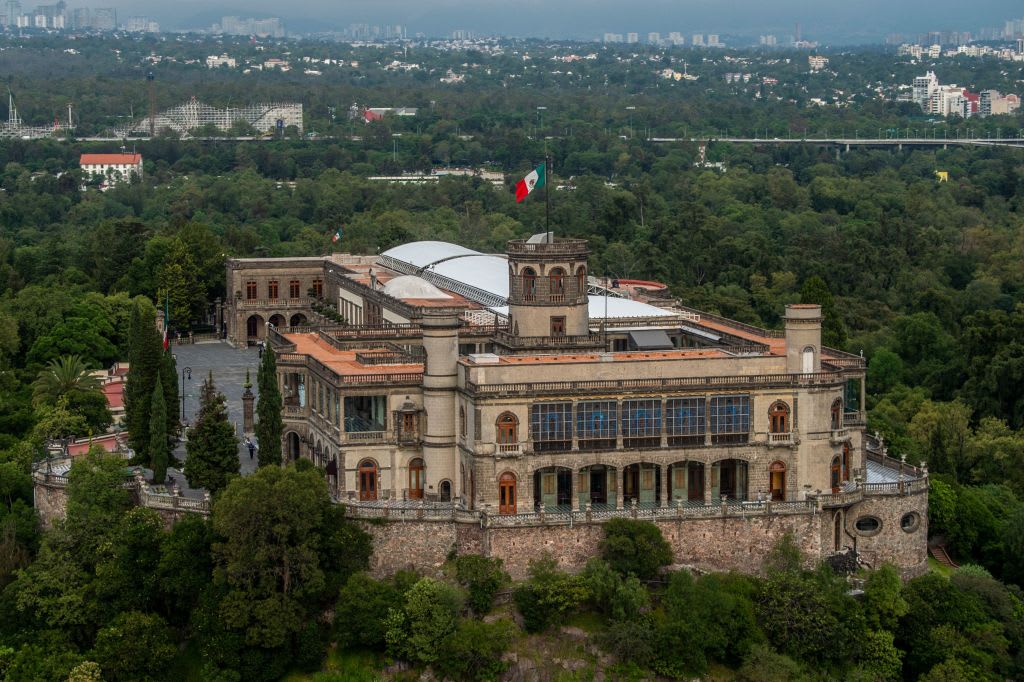
The Castillo de Chapultepec (Chapultepec Castle), one of Mexico's most emblematic historic buildings and home to the National Museum of History
Based around a central courtyard, there are 11 galleries to explore in the award-winning building designed by architect Pedro Ramirez Vazquez, to fit sympathetically within the natural environment of the surrounding park. Expect to lose yourself for a few hours in this immersive and beautiful space.
Located 30 miles north-east of Mexico City lies Teotihuacan, an ancient Mesoamerican city believed to have been settled as early as 400BC. Designated a UNESCO World Heritage Site in 1987, this most powerful and influential city of the region was mysteriously destroyed by fire, and smashed artworks suggest some sort of uprising occurred, although historians remain puzzled as to its downfall and it had been abandoned for centuries by the time the Aztecs discovered it in the 1400s.
READ MORE: IndyCar star and McLaren reserve O'Ward to drive in FP1 at Mexico City Grand Prix
Naming it Teotihuacan, meaning ‘the place where the gods were created’, the Aztecs revered the city as the origin of civilisation and it remains one of the most visited ancient sites in Mexico.
Spanning an area of 20km and with a precise grid layout, the city is dominated by the 40 metre wide, 3.2km long Avenue of the Dead, with the 216 ft tall Pyramid of the Sun and the slightly smaller Pyramid of the Moon flanking the thoroughfare. Sadly, it is no longer possible to climb the uneven steps to the top of the pyramids, but you can still admire their impressive scale from ground level.
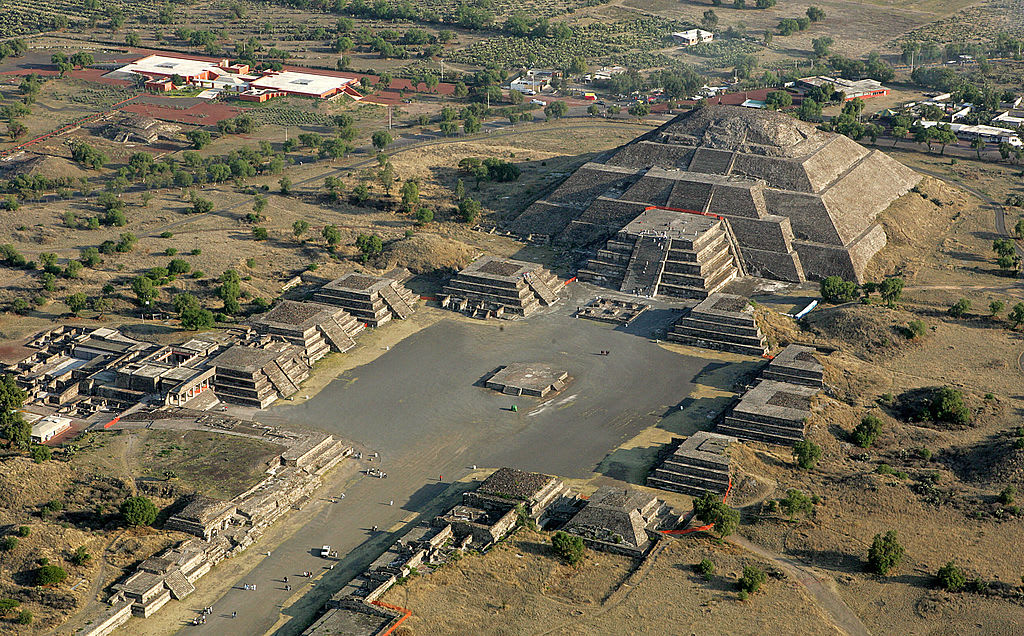
The Moon Pyramid at Teotihuacan
For an alternative view of the city, hop on one of the colourful trajineras (tourist boats) and take a tour on the Xochimilco canals.
Dubbed 'the Venice of Mexico’ and punctuated by traditional floating gardens known as chinampas, this vibrant area is full of vendors on rowing boats selling fresh food and souvenirs, while traditional Mariachi bands entertain the passing tourists who can rent boats by the hour.
Choose from a tour along the main Grand Canal, or the more popular route which takes in La Isla de las Munecas (Island of the Dolls). The slightly spooky sight of countless decaying dolls hanging in the trees on a purportedly haunted chinampa, where legend has it a young girl drowned, will send you hurriedly back in the direction of the upbeat Marichi music.
The birthplace and lifelong home of celebrated Mexican artist Frida Kahlo is now a popular museum dedicated to her work and life.
Nicknamed La Casa Azul (The Blue House) due to its cobalt blue exterior, the museum is full of Kahlo’s paintings and personal objects along with those of her fellow artist husband, Diego Rivera. The studio in which she created her unique style of art has been faithfully recreated, complete with her brushes and her easel holding an unfinished painting of Stalin.
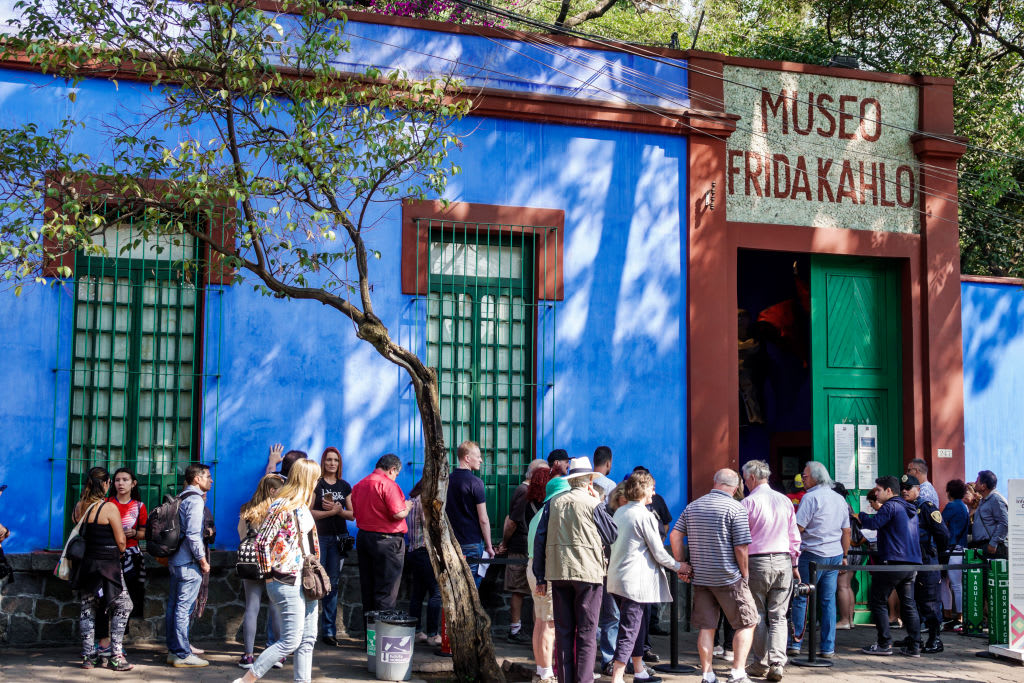
Visitors at the La Casa Azul – the Frida Kahlo Museum
End your tour in the large courtyard garden with its reflection pool and shell clad walls and take a moment to admire the many sculptures by Mexican artist Mardonio Magana which fill the calm and peaceful space, before heading back out into the hustle and bustle of the city beyond.
With its heady mix of Lycra, athleticism and spangle, the cultural phenomenon that is Lucha Libre (Mexican wrestling) is a spectacle not to be missed. Eclipsed only by football in terms of spectator numbers, this hugely popular sport is characterised by colourful masks, flamboyant personalities and a whole lot of spandex, and can be seen at the large Arena Mexico every Tuesday, Friday and Saturday.
READ MORE: How sustainable fuels can benefit the world – and are more than just the future of F1
If you want a race weekend with a joyful party atmosphere, then the Mexico City Grand Prix should be at the very top of your wish list. With its high-octane vibe, old school cantinas, cool neighbourhoods, rich history and culture, and incredible and diverse food, Mexico City is the perfect destination to combine racing with a truly unique adventure.
Fun fact
Each year, Mexicans come together with their families and friends to mark Dia de los Muertos (Day of the Dead) and remember deceased loved ones. Far from being a sombre affair, the holiday at the beginning of November features gift giving of sugar skulls and feasting on favourite foods next to altars decorated in vibrant orange marigold flowers.
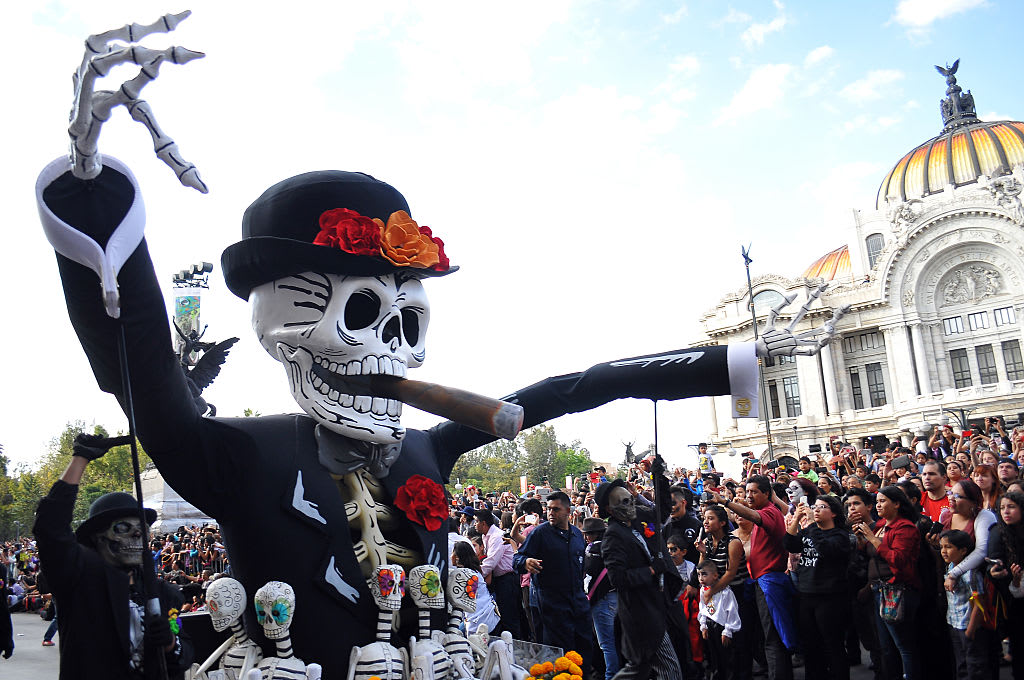
The 'Dia de los Muertos' parade in Mexico City in fact only became a tradition after the James Bond film Spectre!
In Mexico City the festivities are marked with a large colourful parade featuring carnival floats, dancers, visual artists and giant sculptures, which wind their way through downtown to the Zocalo and thousands of people line the streets.
A seemingly long-standing Day of the Dead tradition, the parade in fact only began in the city in 2016 and was inspired by the 2015 James Bond film Spectre, featuring Daniel Craig as Bond trying to thwart a terrorist plot and chasing the bad guys through a completely fictional parade full of skeleton laden floats and people dressed in elaborate costumes at the very beginning of the film.
READ MORE: Formula 1 becomes first motorsport competition to use Pirelli FSC-certified tyres
The Mexican government saw this as a brilliant way to attract more tourism to the city, and thus adopted the parade as part of the annual festivities.
Mexico at a glance
- Population: Approx. 130.7 million
- Language: Spanish
- Currency: Mexican pesos (MXN)
- First F1 race: 1963

RACE TICKETS - MEXICO CITY
Don't miss your chance to experience F1 in the unique atmosphere of Mexico City...
YOU MIGHT ALSO LIKE
Podcast F1 NATION: Sainz on top, more Norris vs Verstappen, and Perez's pain – it's our Mexico City GP review
News How to stream the Formula 1 2024 Sao Paulo Grand Prix on F1 TV Pro
News ‘I’m not just going to get out of his way’ – Lawson frustrated after fierce battle with Perez in Mexico
Feature ICYMI: Skeletons, pit lane acrobatics, and the most epic photo bombs yet in the best social media from Mexico City
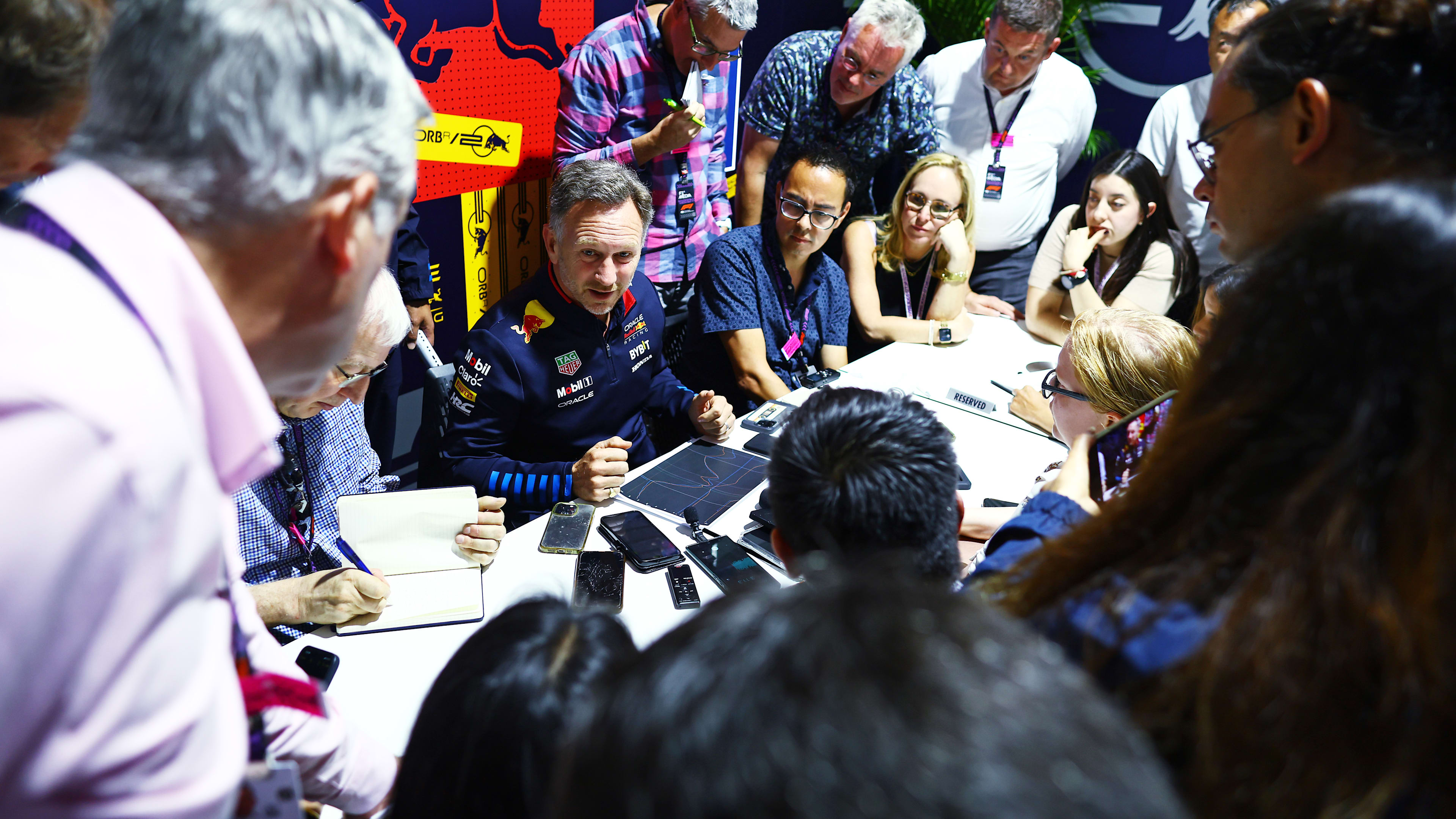
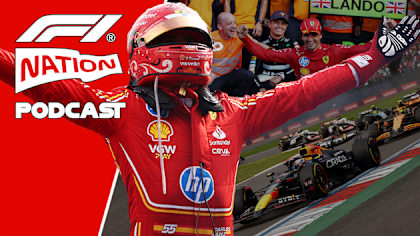
)
